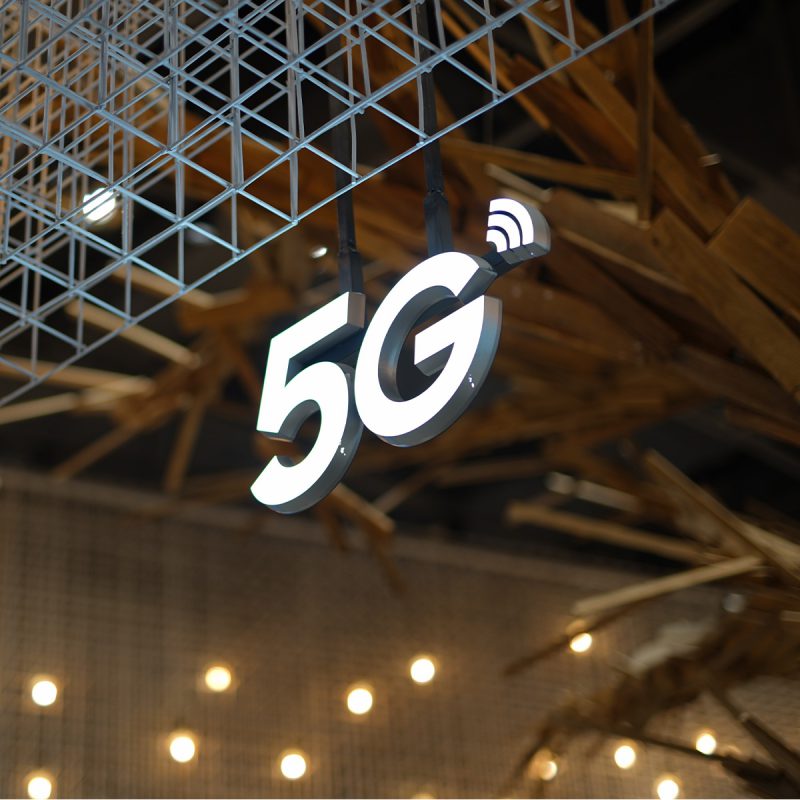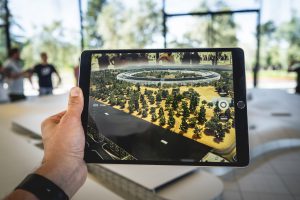

What 5G Means for Your Business & Industry
5G is one of 2019’s technological buzzwords. When fully deployed, 5G technology is meant to transform lifestyles and businesses for the better at faster speeds with larger connectivity.

Photo: Speed test performed on a mobile phone
Certain mobile carriers have only begun to roll out 5G infrastructure and networks this year, so ‘5G’ is still a contentious term that many people are confused about. Why does it matter? How big is the impact on various industries? 4G vs 5G? 5G vs NBN?
That being said, this article aims to answer all the common queries surrounding the rollout of 5G in Australia, and how it affects industries and businesses.
What is 5G?
5G is the fifth generation wireless mobile network technology. As the next progression from 4G, 5G networks offer a tremendous improvement in speed, latency, and connectivity.
What makes 5G great?
- Faster Speed. The 5G network can reach download speeds of about 20 gigabits per second and an upload speed of 10 gigabits per second. This alone exceeds most wired network speeds and is 10 times faster in speed than 4G. According to Lifewire.com, the speed of a 5G network depends on various factors such as the hardware being used, how many users are sharing the network, latency, and the speed the network is capable of.
- Lower Latency. Latency refers to the time it takes for data to travel from the sender to the receiving device (and back again). This is more commonly known as the ping rate in online gaming. In this respect, 5G has a minimum latency of 6 milliseconds and could go as low as 1 millisecond for ultra-reliable low-latency communications (URLLC). This translates to increased responsiveness in gaming or improved syncing of parties in video conference calls.
- Higher Capacity. Even in population-dense locations and networks, more people can connect to 5G at the same time. This paves the way for interconnected machinery, and more broadly the Internet of Things (IoT).
- Network Slicing. A type of virtual networking architecture, network slicing allows multiple logical networks to be created on top of a common shared physical infrastructure. This allows wireless network connections to support specific uses or business connections. InsiderPro cites an example, “a mobile operator will be able to split its physical network resources into multiple logical slices and lease these slices out to interested parties.”
5G VS 4G
A 5G network’s peak speed is 20 times faster than the 4G LTE speed of 100-300Mbps. There will also be a 30-40-millisecond drop in latency that effectively eases the congestion in the network (really helpful if everyone were to video stream at the same time). In theory, 5G is capable of handling up to a million devices per square kilometre.
*It’s important to note that 5G won’t replace 4G and both will coexist as 3G did when 4G started to rollout.
5G VS NBN
As of this writing, 5G is still the more expensive option compared to an NBN. However, the peak speak of NBN at 12-100Mbps (depending on the type) can’t compare to that of 5G’s at 1-20Gbps. As NBN is a fixed-line fibre optic and 5G is mobile data on-the-go, they’re designed to work hand-in-hand with each other as not all devices released in the past 10 years will be able to connect to 5G.

Table: The Peak Speed and Latency of 4G, 5G and NBN
When is 5G getting rolled out in Australia?
Australia’s biggest carrier providers, including Telstra, have started to roll out 5G in limited areas with expected completion in 2020.
How Does the 5G Rollout Affect Your Business?
Following the launch of 5G and its impending completion by 2020, businesses can start to leverage on what they can do for their business and customers. Various industries will have different trends to take advantage of and be proactive about.
Finance
5G is expected to accelerate the digitisation of banks and financial institutions to deliver new services such as mobile payments, wearable technology, instant data transfers, or financial recommendation software. In its full peak, 5G will play a huge role in the facilitation of the convergence of technologies such as AI, blockchain, and IoT services.
Healthcare
As healthcare systems deal with huge datasets, 5G will allow for faster data transactions. It will transform how accurately patient insights are derived, how the treatment is delivered, and whether or not wearable devices can be synced with other technology to identify health risks in real time.
Agriculture
5G’s faster speed at low latency will allow farmers to streamline their farm and livestock processes. This encompasses soil, water and crop decision management support (mainly in monitoring crop and livestock safety). Farming technologies paired with 5G provides contingencies around risk seasons for stocks and enables farmers to forecast better with a lower risk of compromising their harvest. As an example, farmers using Movus sensors will gain faster insights into the health of their machinery, Drones such as CAPE will provide improved visibility of crop health, and technologies such as Gago that incorporate weather, farm and crop data will enable more precise digital farming practices.

Photo: Augmented reality (AR) in action
Retail
To keep up with the booming mobile technology and eCommerce sectors, the retail industry ought to incorporate in-store technology to continually lure potential customers in. Implementing 5G networks could mean Virtual Reality (VR) or Augmented Reality (AR) dressing rooms, interactive mobile apps, or even pattern recognition of shoppers. All of which present a huge opportunity for a number of Telstra Ventures portfolio companies including Hypereal, Headspin, Kony, Near and Gorilla. IoT-embedded sensors are also able to tell management when stocks are low in real-time.
Manufacturing
Manufacturing firms and factories will soon have embedded sensors and interconnected machinery that will track the progress of products as they go through the progressive assembly line. We are already seeing the emergence of similar use cases in Logistics within our portfolio in companies such as AirSpace who’s making shipping faster, safer and more transparent than ever before. This allows for more risk-averse processes and increases productivity, flexibility, and savings.
Energy
The impact of 5G on the energy sector has dependencies on several infrastructures to be built. When rolled-out to completion, the increased interconnectivity brought about by the fast speed will cut operational and deployment costs.
Transportation
5G technology has a huge untapped potential in transportation. In full bloom, it will enable vehicle-to-vehicle communications, real-time traffic signal changes, a reduction in commute times, and self-driving car testing. All of this leads the entry into becoming an IoT smart city powered by 5G.
Is 5G as good as it seems?
Theoretically, yes. When completely rolled out, there will be a significant difference in speed, latency and connectivity that’s subject to change depending on various factors mentioned earlier. This affects businesses and consumers alike, so it’s best to strategise on B2B and B2C levels.
5G improves customer experiences by enabling organisations to do what they do, better. As an example, Telstra Ventures portfolio companies NGINX and Instart will serve website content and images even faster to end devices browsing the internet, Trifacta, Swish Analytics and Incorta will process huge data sets more effectively, enabling decision makers to gain faster insights and take action and gaming platforms like TeamSolomid will deliver far superior player experiences with smoother operations that makes the user feel as if their virtual reality is indeed real.
If companies are able to jump in proactively and create strategies/processes to leverage this next-generation technology, the possibilities can be positive, impactful, and transformative.
Australia is a brilliant country when it comes to technology. 5G presents an amazing opportunity to win the race with respect to so many new, and yet to be discovered, innovations. It will be a vital and powerful element in the next chapter of Australia’s technology’s leadership and prosperity especially as the race for innovation continues to accelerate.

Steve Schmidt, Partner at Telstra Ventures
Mr. Steve Schmidt serves as a General Partner at Telstra Ventures where he started in 2011. He serves as a Board Observer for Nasuni and Cumulus Networks and held prior Board & Board Observer roles at Whispir, Nginx, Uhana and Kony. Steve leads Telstra Venture’s enterprise IT investment practice and led investments in DocuSign (IPO), Box (IPO), Kony (sold to Temenos), Elemental Technologies (sold to AWS), Whispir (IPO), Velocloud (sold to VMware) Mandoe Media (sold to Mandoe), Ooyala (sold to Telstra), Instart Logic, Nginx (sold to F5), Uhana (sold to VMware), Asapp, Cumulus Networks, Gitlab, and Nasuni. Steve is also an angel investor with seed investments in mParticle and Tokenize. Steve has extensive investor relationships in Silicon Valley, San Francisco, New York, Washington, Boston, Toronto, Singapore, Israel, India & Australia.